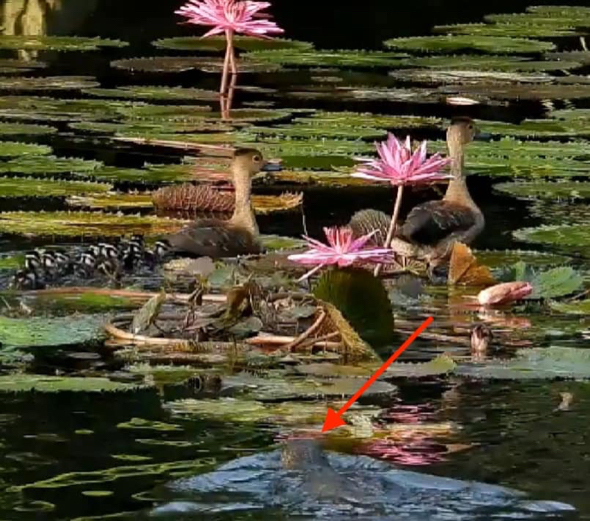
The recent sightings of two adult Lesser Whistling Ducks (Dendrocygna javanica) and their raft of 11 ducklings caused much excitement among nature enthusiasts, especially bird photographers. Of the five video clips accompanying this post, the one by Mei Lin Khoo showed a lurking Malayan Water Monitor (Varanus salvator) in the water (video grab, above). This caused concern as the ducklings could well be preyed upon by the lizard. However, it was fortunate that the lizard appeared only after the ducks had all moved far away.
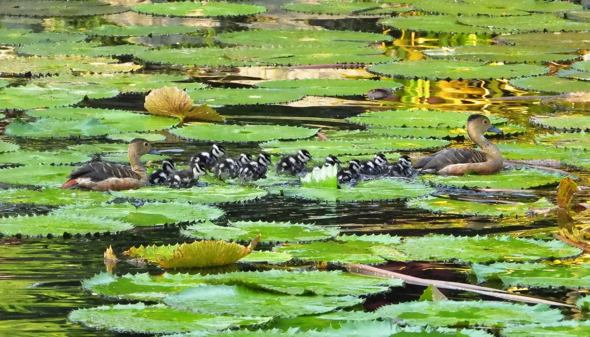
Photographs emphasising on the “cute factor” of the ducklings, like an adult leading 11 cute ducklings swimming in a row, with another adult taking the rear (above), could well contribute further to the upsurge of concern. The cuteness of the ducklings could be another factor (below).
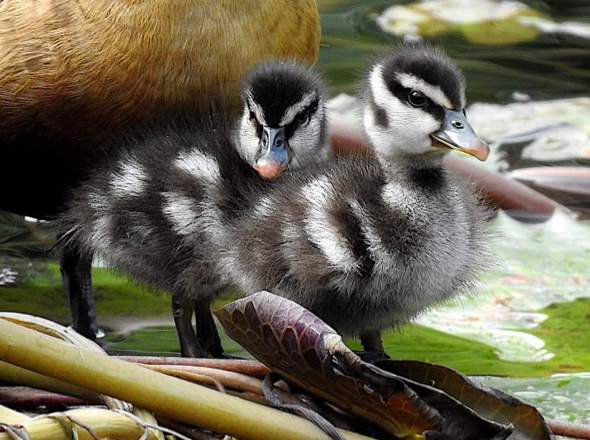
A few days later, the number of ducklings was reduced to 8 from the original 11, as reported by Mary Yeo. Then Andy Chew made a head count and found only 7 left.

The resident monitor lizard was the main suspect (below). Chew Serteck mentioned snapping turtles and toman or snakeheads as other predators and reported that only 5 ducklings were left.
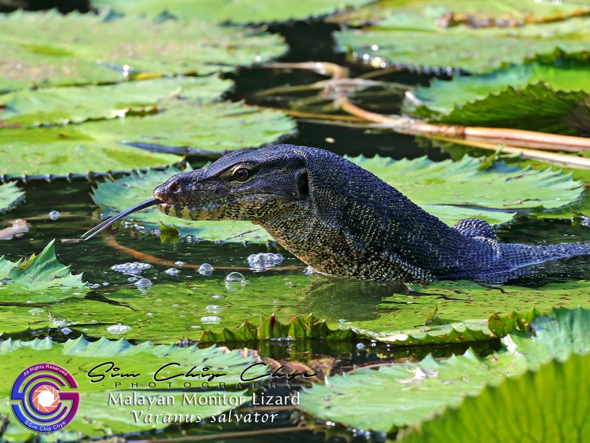
“As the number of ducklings dwindled with the days, calls were made for Gardens by the Bay to be more proactive in ensuring the safety of these cute ducks. One suggestion was fencing to isolate the brood from potential predators.
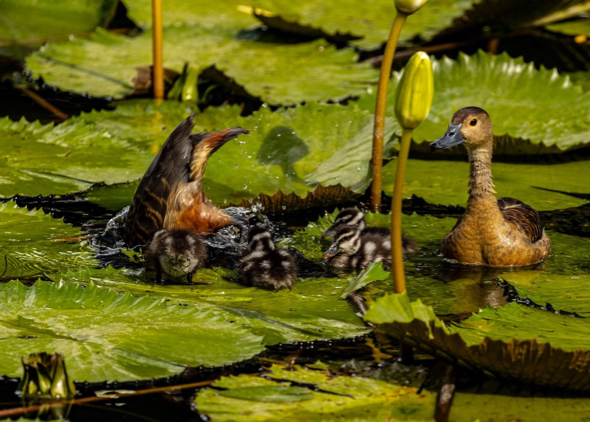
“There were others who were against meddling with nature. Russell Boyman for example wrote: “We should not meddle with nature… If we are happy to photo fish eagles with prey, we must accept this also, and not play God when it suits us. It is worth noting that species like ducks have evolved to have very large broods to cope with the high level of predation.” The law of nature may be harsh but this helps keep the balance between different species, as otherwise there may be an overpopulation of these ducks. Imagine what would happen if ponds are filled with masses of these ducks. Will the public not clamour for them to be culled?
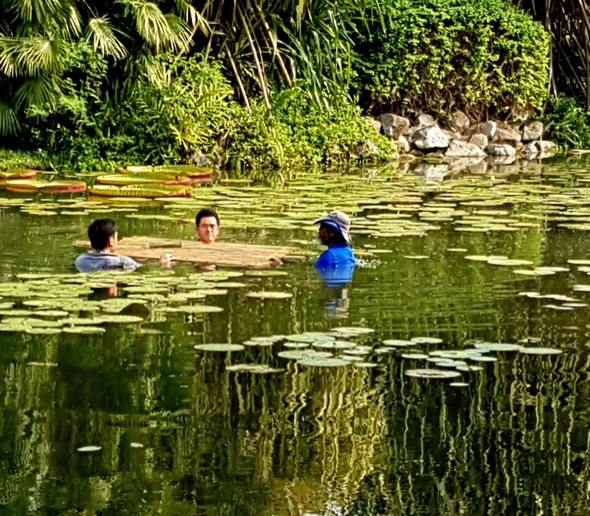
“Finally, the Gardens by the Bay people built a bamboo raft and floated it on the pond for the ducklings to take refuge (above). The remaining 4 ducklings did find the raft useful (below).

Mei Lin Khoo, Kok M Lee, Sim Chip Chye, Chew Srteck, Anthony Nik, Jeremiah Loei, Yongphai Tan, Russell Boyman, Mary Yeo & Andy Chew.
Singapore
29th June 2019








